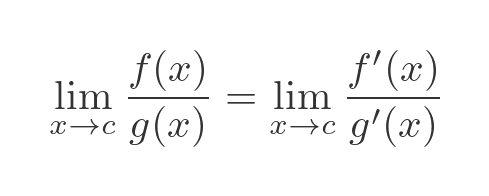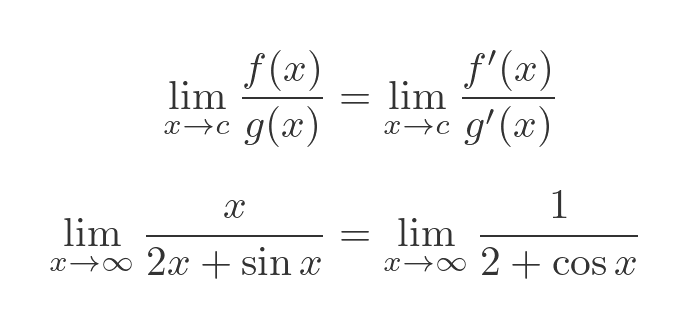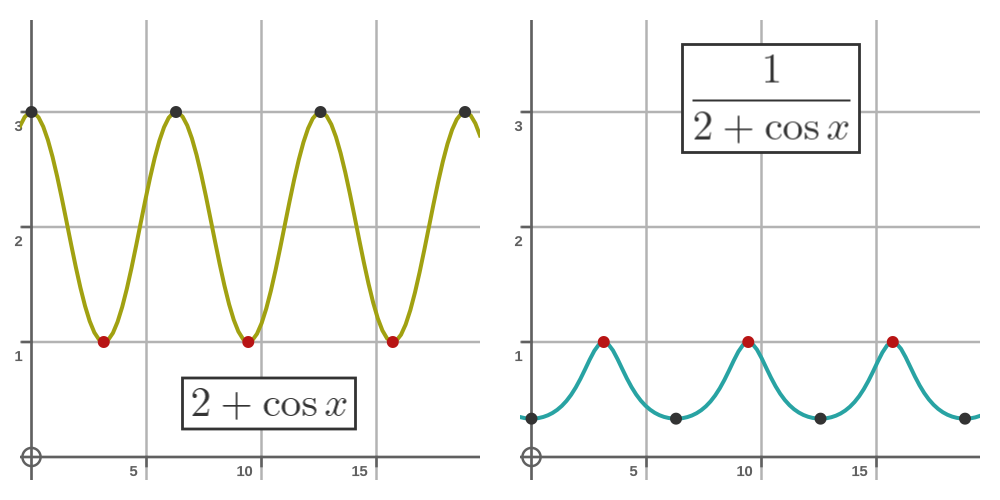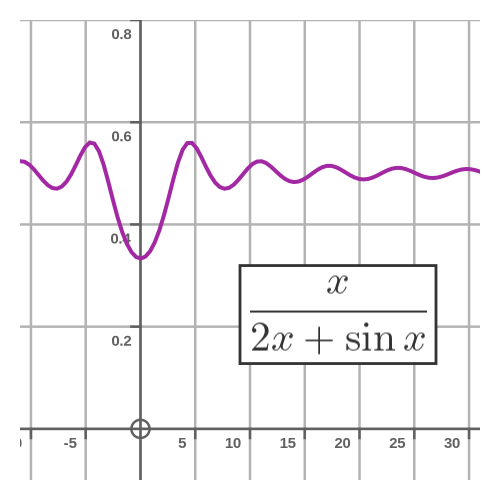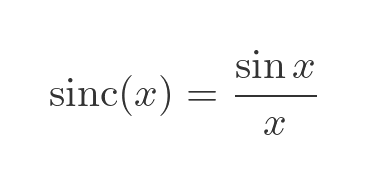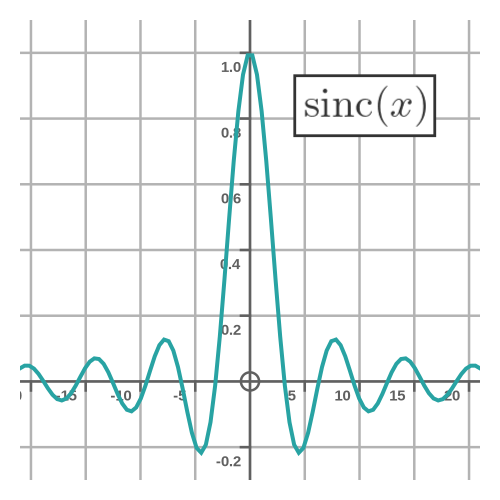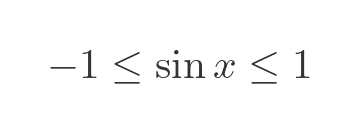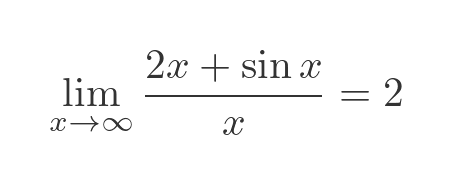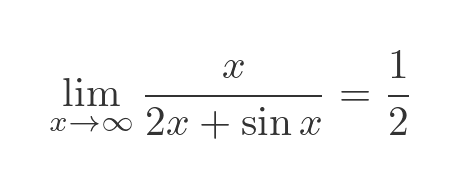Limits that fail L'Hôpital's rule
We can often use L’Hopital’s rule to find the limit of an indeterminate form. In many cases, L'Hôpital's rule is the only way to find a solution. But we should bear in mind that it is not the only method available, and might not be the best method in every situation. In particular, just because L’Hospital’s rule fails to find a limit, that does not necessarily mean that no limit exists.
In this article, we will look at a case where L'Hôpital's rule doesn't work. We will see two alternative ways to find the limit.
The problem
We will find the following limit:
Notice that the top and bottom of the fraction both go to infinity as x goes to infinity. This means the limit takes an indeterminate form, in this case infinity divided by infinity. Its value could potentially be zero, infinity, or anywhere in between.
L'Hôpital's rule
A common way to solve problems like this is to use L'Hôpital's rule. This can be applied if a limit of a quotient takes an indeterminate form, that is to say if f and g both go to zero, infinity, or negative infinity, as x approaches c. The rule says that we can find the limit of the quotient of the first derivatives, f' and g', instead:
In this case we have the following f and g:
Differentiating these functions gives:
Substituting all this back into L'Hôpital's formula gives:
L'Hôpital's rule fails to find a limit
Unfortunately, the previous formula doesn't help us find the limit. The denominator of the fraction, 2 + cos x, is shown on the left, below:
This is just the cosine function, shifted up by 2 in the y-direction. So for every x that is an even multiple of π, the function has value 3, and for every x that is an odd multiple of π, the function has value 1. These are shown by the black and red dots.
The function we obtained from L'Hôpital's rule is the reciprocal of this function, shown on the right of the graph. This function oscillates between 1/3 and 1, again shown by black and red dots.
Remember that if a function has a limit L at infinity, this means that the value of the function must get closer and closer to L as x gets very large. But for our function, the value will oscillate between 1/3 and 1, no matter how big x gets. So for any possible limit L, there will always be values of x where the distance between the function and L will be at least 1/3.
This isn't the end of the road!
It is important to remember that L'Hôpital's is just one possible way to find the limit of a function. But it might not always work. And if it doesn't work, that doesn't necessarily mean the function doesn't have a limit. There still might be a limit, we just need to find the limit in a different way. Although sometimes, of course, the function might not have a limit at all.
It is often useful to plot the function to see if it looks like it might have a limit, and to get some idea of the answer we are expecting. Here is a plot of our original function:
It certainly looks like it might tend towards a limit of about 1/2 as x increases. But we still need to prove it.
Alternative method 1
There is a simple method we can use in this specific case, as an alternative to L'Hôpital's rule. Looking at the original limit expression, we can divide top and bottom by x:
We can make use of the sinc function:
The sinc function is a standard function that is used in physics and engineering, and has well-known characteristics. Here is what it looks like:
We can write the previous expression in terms of sinc:
A particular property of the function is that it has a limit of 0 as x tends to infinity. This can be seen from the graph, and can be proved using the squeeze theorem, but we won't prove it here. Substituting this into the earlier equation gives the result:
This confirms what we suspected from the graph, that the limit is indeed 1/2.
Alternative method 2
The above result is perfectly valid, as it is based on proven results about a well-known function. But we won't always be that lucky, so we will end by looking at how to solve the same problem in a more general way, without relying on any knowledge about the sinc function. Firstly, we know that the sine function is bounded between +/- 1:
If we add 2x throughout, the inequality still holds:
If we divide by x throughout, the equality still holds provided x is positive. Since we are interested in values of x that approach infinity, we know x will be positive:
We know that 1/x has a limit of 0 as x tends to infinity, so we can find the limits of the outer terms:
Now we can use the squeeze theorem to find the limit for the centre expression. Since the value is bounded by two other values that each have a limit of 2, then, according to the squeeze theorem, the value of the expression itself must have a limit of 2:
We are interested in the reciprocal of this expression, which therefore has a limit of 1/2 as x tends to infinity:
Summary
L’Hopital’s rule is a very useful way to find limits in certain situations. But it isn't the only way, and if it doesn't work in a particular situation, it is worth trying to find a different way.


